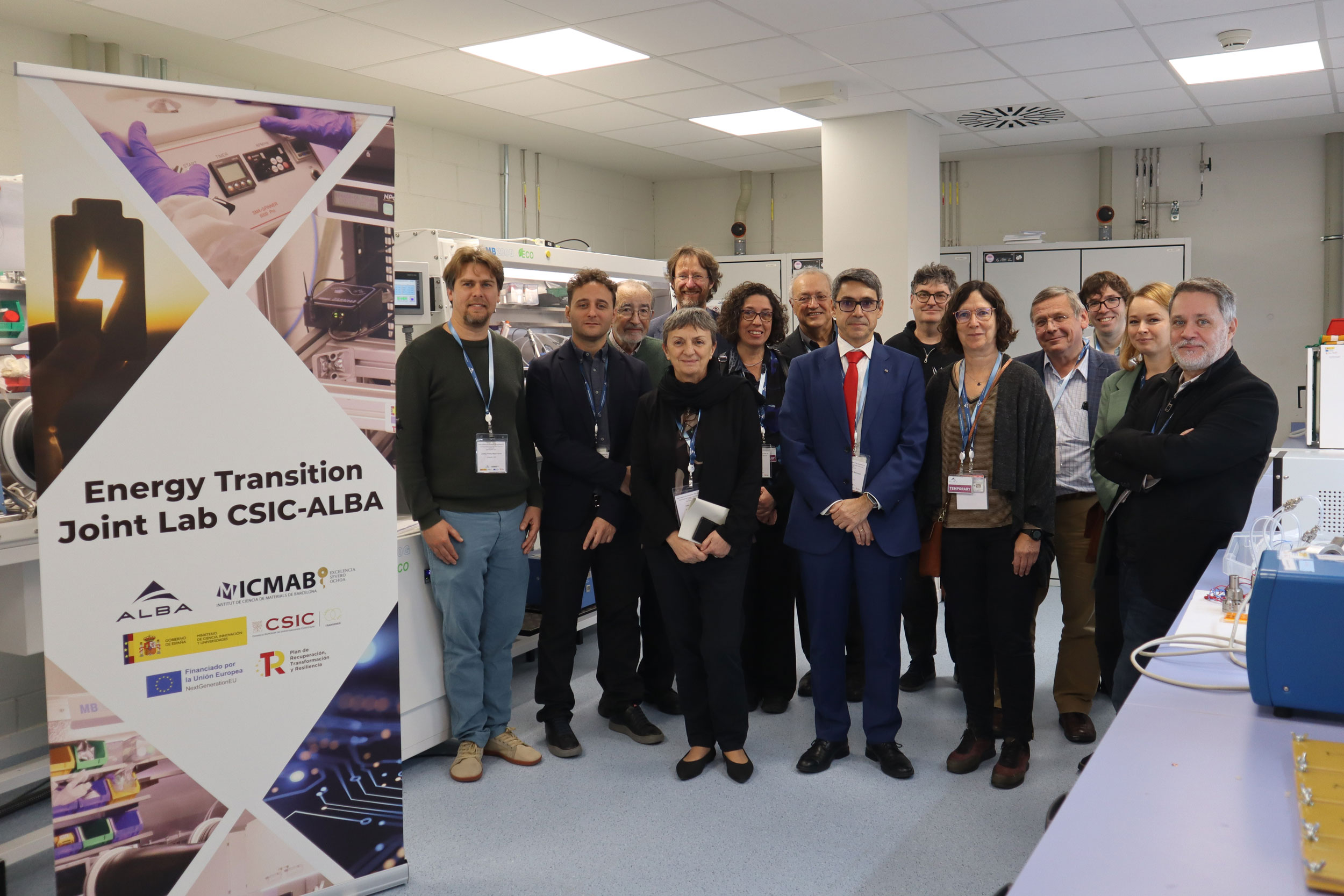ALBA Synchrotron

On Friday 13th December 2024, the ALBA Synchrotron and the Institute of Materials Science of Barcelona (ICMAB-CSIC) organised an event to officially inaugurate a new laboratory at ALBA’s premises. This facility represents a significant step forward in fostering innovation in green energy between academia and industry. The laboratory is now operational and open to projects from CSIC researchers and other ALBA users.
ALBA and ICMAB-CSIC have teamed up to establish this laboratory to prepare, test and optimize samples in clean energy research directly at ALBA's premises. The Institute of Chemical Technology (ITQ-UPV-CSIC) has also contributed to this laboratory. This new infrastructure helps research teams to take the most of their experiments at ALBA and also encourages the collaboration and growth of local groups in battery research and superconducting tapes developments. This initiative has been funded by the CSIC PTI+ TransEner initiative (supported with NextGenerationEU funds) and the ALBA Synchrotron.
The event highlighted the capabilities of this new laboratory and the opportunities it offers to the scientific community. Participants included the General Director for Knowledge Transfer and Society of the Generalitat de Catalunya, Javier Selva, who opened the event and delivered an institutional speech, and José María Martell, CSIC Vice-President for Science and Technology, who emphasized the CSIC’s contribution in promoting energy transition studies.
Caterina Biscari, director of the ALBA Synchrotron, expressed the importance of collaborating with research institutions like the CSIC to better serve the ALBA scientific community. M. Rosa Palacín, ICMAB-CSIC Research Professor, highlighted the laboratory’s setup and equipment and informed that the laboratory has already been used by more than 150 researchers, raising great interest among the community, as it is unique and not available in other synchrotron facilities.
Three scientific talks by users followed to introduce how they have already profited from this new installation to advance in their research: Teresa Puig (ICMAB-CSIC) on superconductors, Marine Reynaud (CIC EnergiGUNE) on batteries, and Gonzalo Prieto (ITQ-UPV) on catalysis. Klaus Attenkoffer, ALBA scientific director, remarked that this laboratory, apart from strengthening the high level of research of the users, also promotes their innovation, going forward in connecting academia and industry.
The event ended up with a visit to the new laboratory and some of the beamlines closely connected to it.
A facility for advancing energy transition: from batteries to superconductors
The new laboratory consists of two main areas, both devoted to finding greener energy applications in relevant industrial sectors. One is aimed at developing batteries - key in transport electrification and the integration of renewable energies - in order to analyse them under operando conditions (during charging and discharging) while using synchrotron-based characterization techniques. At this new laboratory, researchers have the appropriate tools to prepare and assemble electrodes and cells for experiments, optimising the experimentation time.
The other area is focused on producing high-throughput samples of superconducting tapes, which are essential to distribute electrical energy at low losses and generate electricity in compact fusion reactors by magnetic confinement. The ICMAB-CSIC has created a new methodology for synthesizing superconducting materials called “Transient Liquid Assisted Growth” (TLAG). At the new laboratory, the equipment used for the in situ growth of these superconductors can be used in the ALBA Synchrotron beamlines, controlling aspects such as the temperature or the pressure during the growing process. The final goal of these studies is to reduce their cost/performance ratio and, therefore, improve commercial viability. This fact enables stablishing collaborations with companies like Sumitomo.
The ITQ-UPV-CSIC has developed instrumentation that allows performing operando experiments when analysing catalysts with synchrotron light. This research has also generated outstanding connections with industry through collaborations with big companies like BASF and the creation of a spin-off company.
This laboratory stands as a prime example of collaborative innovation, advancing global efforts in the energy transition.